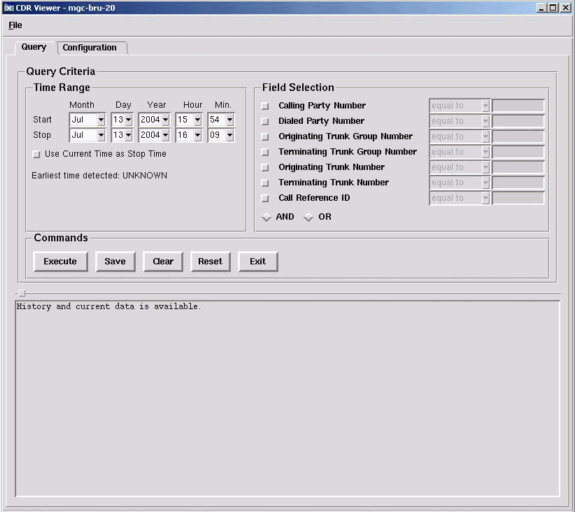Introduction
This document explains how to check the Call Detail Recording (CDR)
file creation on the Cisco PGW 2200. With the Cisco PGW 2200 Release 9.2(2) and
later, the CDR files are created as binary files. In this case, you need to
have a Cisco Billing and Measurements Server (BAMS) that collects the binary
files through FTP and processes them into a readable Bellcore AMA Format (BAF)
file. This document explains how to check the binary files on the Cisco PGW
2200.
Prerequisites
Requirements
Readers of this document should have knowledge of these topics:
Components Used
The information in this document is based on the Cisco PGW 2200
Software Releases 9.3 and 9.4.
The information in this document was created from the devices in a
specific lab environment. All of the devices used in this document started with
a cleared (default) configuration. If your network is live, make sure that you
understand the potential impact of any command.
Conventions
Refer to
Cisco
Technical Tips Conventions for more information on document
conventions.
Check CDR Information on the Cisco PGW 2200
Use the TAC tool in order to use the CDR information for
troubleshooting or validation. This tool also converts the bin format into the
txt format by using the /opt/Toolkit/bin/MGC_Toolkit
command, as shown in this example.
Note: This tool cannot be used for the creation of daily billing record
details. This is because the Protclsh83.bin job (located under the
/opt/Toolkit/tcl/TclPro1.4/solaris-sparc/bin/ directory) uses a large
percentage of CPU resources. The use of the MGC_Toolkit in a script can drive
the Cisco PGW 2200 into congestion. If you want to convert the CDR binary files
from the Cisco PGW 2200 for billing customers, use the
Cisco
BAMS application for this solution. The MGC_TOOLKIT is only part for
troubleshooting scenario.
Connected to PGW2200A.cisco.com.
Escape character is '^]'.
SunOS 5.8
login: mgcusr
Password:
PGW2200A% cd /opt/Toolkit/bin/
/opt/Toolkit/bin
mgcusr@PGW2200A% MGC_Toolkit cdrconvert -input /opt/CiscoMGC/var/spool/cdr_20020904155525_008040.bin
Reading the number 1 TLV record in filename:/opt/CiscoMGC/var/spool/cdr_20020904155525_008040.bin
message tag ID is :1090 (File_Header)
message tag 1090 length is : 93
tag ID is :4000 (Ver)
tag 4000 length is :1
Conversion Data Type: BE to IA5
tag 4000 value is : 1
tag ID is :4001 (Create_Tm)
tag 4001 length is :4
Conversion Data Type: BE to DT
tag 4001 value is : Jan 10 2002 GMT 23:07:26
tag ID is :4002 (Call_Ref_ID)
tag 4002 length is :8
Conversion Data Type: BE to HEX
tag 4002 value is : 0X0000000000000000
tag ID is :6001 (File_Start_Time)
tag 6001 length is :4
Conversion Data Type: BE to DT
tag 6001 value is : Jan 10 2002 GMT 23:07:26
!--- Delete the other information, otherwise you will have four pages of information.
!--- The tool's MGCC_Toolkit is built to check whether or not the bin files are corrupt.
You can also issue the toolbar.sh cdr
command under the /opt/Toolkit/bin directory to receive the information through
the GUI:
mgc-bru-20%toolbar.sh cdr
Note: If you want to access the Cisco PGW 2200 from a UNIX station, issue
the xhost + UNIX command (for a description of this
user command, issue the man xhost command) on your
UNIX station. At the prompt, use the mgcusr username. It has
its own environment settings for this application.
Also add the DISPLAY command on the Cisco
PGW 2200, as shown in this example:
% telnet pgw2200A
Connected to PGW2200A.cisco.com.
Escape character is '^]'.
SunOS 5.8
login: mgcusr
Password:
PGW2200A% cd /opt/Toolkit/bin/
mgcusr@PGW2200A% setenv DISPLAY workstation_name:0.0
!--- Replace "workstation_name" with the workstation
!--- where you wish to display this application.
mgcusr@PGW2200A% toolbar.sh cdr
This is an example of the GUI provided by issuing the
toolbar.sh cdr command:

Related Information

 Feedback
Feedback